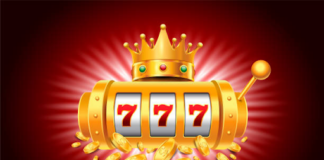In many different industries, both editors and proofreaders have different responsibilities. In the book world, the editor is responsible for the general level of quality and accuracy. The proofreader looks at the manuscript and makes sure everything is grammatically correct, or at least consistent with the intent of the writer.
In other words, the editor is the one who decides exactly what is or is not correct. The proofreader is more of a “what if” person who can often make a manuscript turn out better, or at least more accurate.
The difference between an editor and a proofreader is that the former has a very specific job, while the latter has a much broader responsibility. But at the end of the day, they both have to make sure the manuscript is the best it can be.
The proofreader makes sure the manuscript is correct by checking spelling, grammar, and punctuation. The editor makes sure that the manuscript is good enough to be published. In other words, the editor and the proofreader are not in competition with one another. The editor is only involved in editing. The proofreader is the one who writes the book, but it’s up to the editor to make sure it is exactly as it is written.
At the very least, I think you need to be able to do both. There is no way you can be an editor and not have a good handle on how to write. You can be a copy editor and be a jerk, but if you have a good handle on the first thing you do, you can be a good editor and still have a good handle on the rest.
The word copy editor doesn’t mean “someone who writes” or “someone who edits”. I was not raised to be an editor (and my Dad was not raised to be a copyeditor). I was brought up to be a writer. I was taught to write everything by a series of unspoken rules. The rules of writing are those that you follow. The only other people who have that sort of power are the ones who have to do it themselves.
I’m not talking about the type of copy editing that you do by hand, but the copy editing that you do by yourself. Some people call it “proofreading.” What I’m talking about is something else entirely. I’m talking about the type of editing that you do by yourself, the type of editing that you do for yourself. This is where you know the difference between “copy editing” and “proofreading.
The copy editing and proofreading that you do by yourself is very different from the type of editing that you do while you’re working on a project. For example, you might edit a draft of a project, and then start to edit a draft of a project again. While you’re editing the next draft, you might be working on some other project for which you have more expertise. In this case, you’re not editing the next draft of your own project. You are editing something else.
copy editing is writing and proofreading, while writing and proofreading are very separate activities. While youre writing and proofreading, you probably have the best of both worlds, and what you end up with is a much better version of the original. This is what is called a “good edit”. But when youre working on a project that has a lot of spelling and grammatical errors, youre basically working on a draft of someone else’s project. This is called a “bad edit”.
Proofreading is often a tedious, grueling process. It takes a lot of time to get your words and sentences exactly right. When youre a copy editor, youre editing a document, not a person. Which means youre constantly comparing and contrasting your words and sentences with someone else’s. This is very time consuming, and a bad editor can be extremely frustrating. A copy editor takes away this frustration and keeps you focused on what youre doing.








